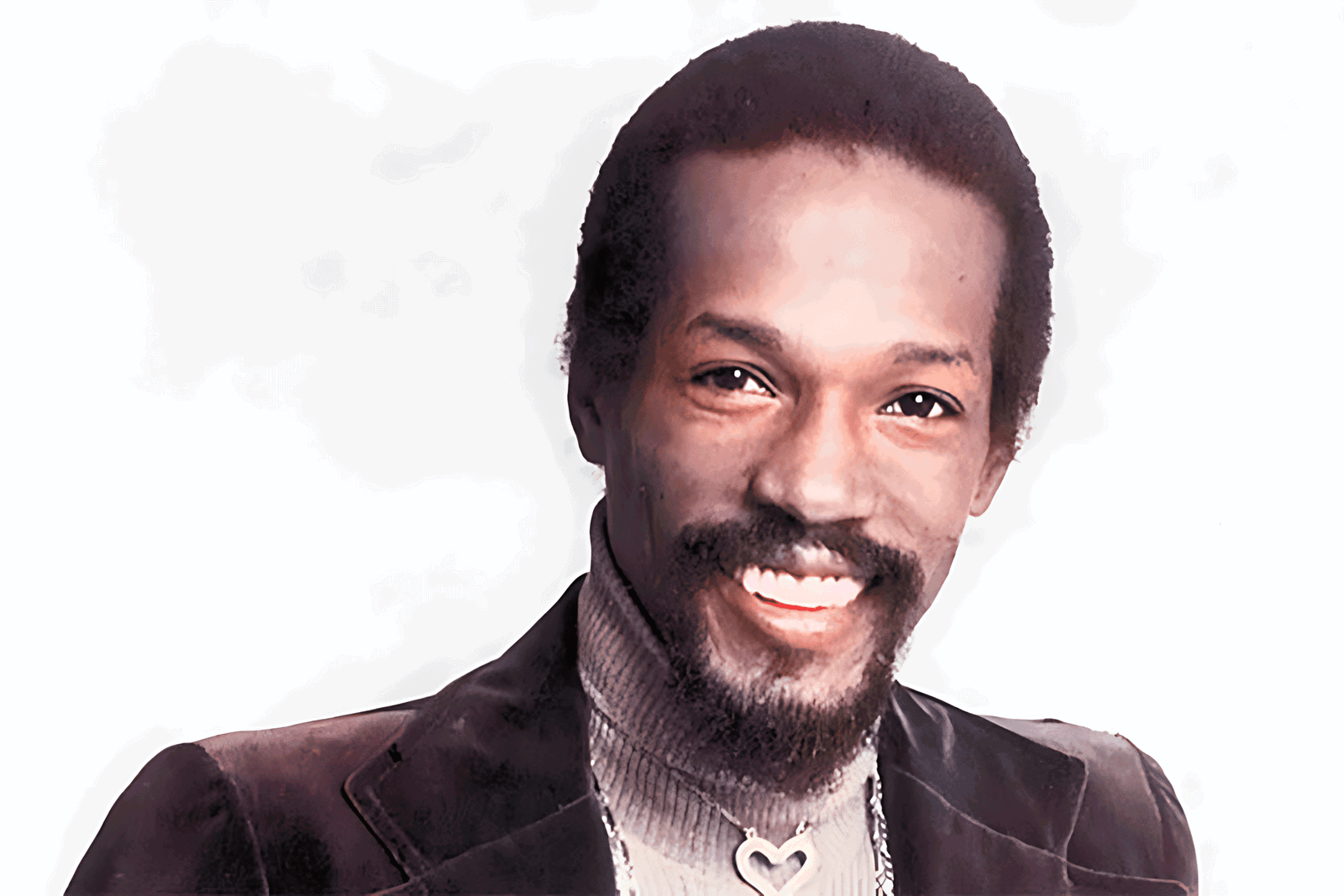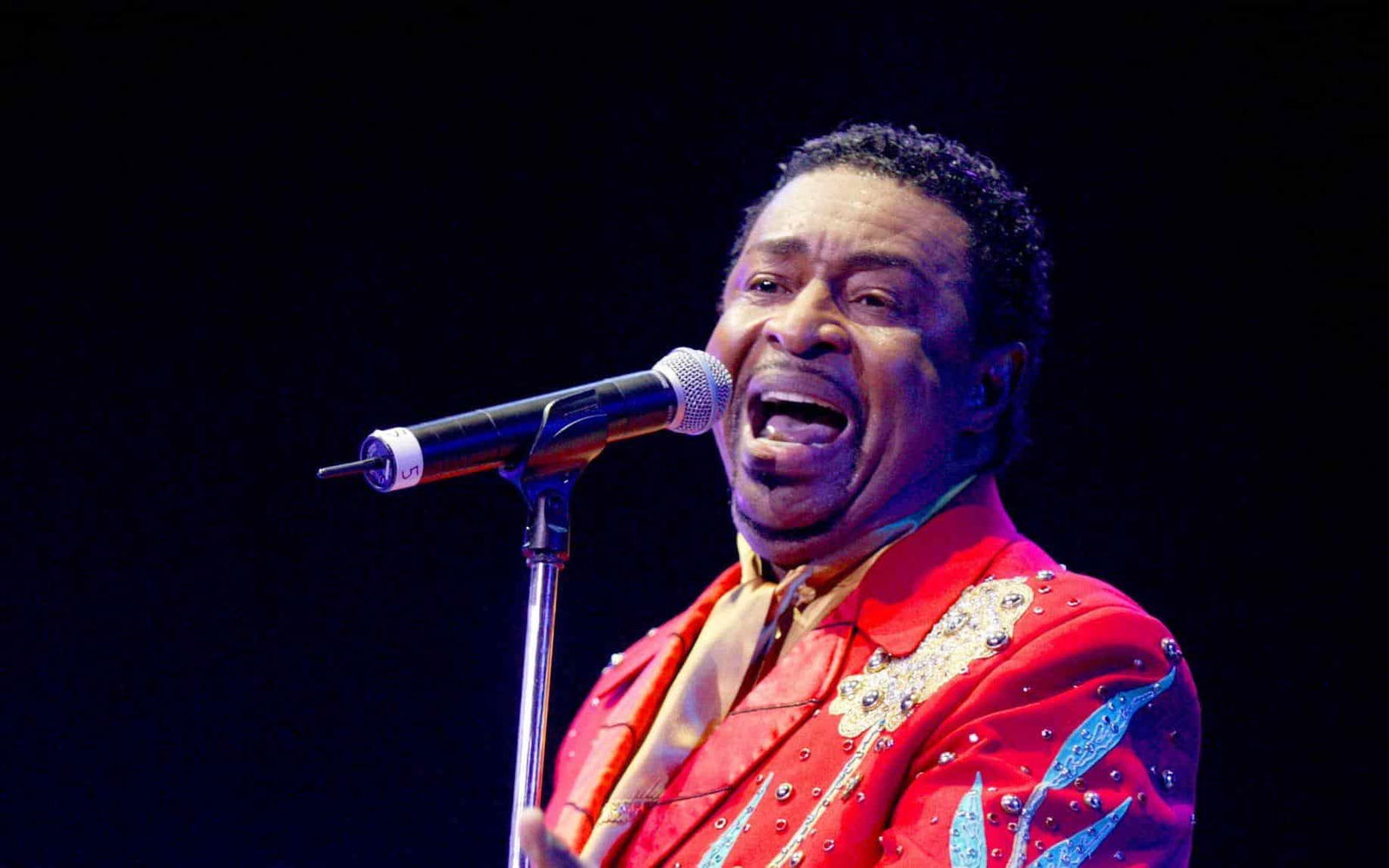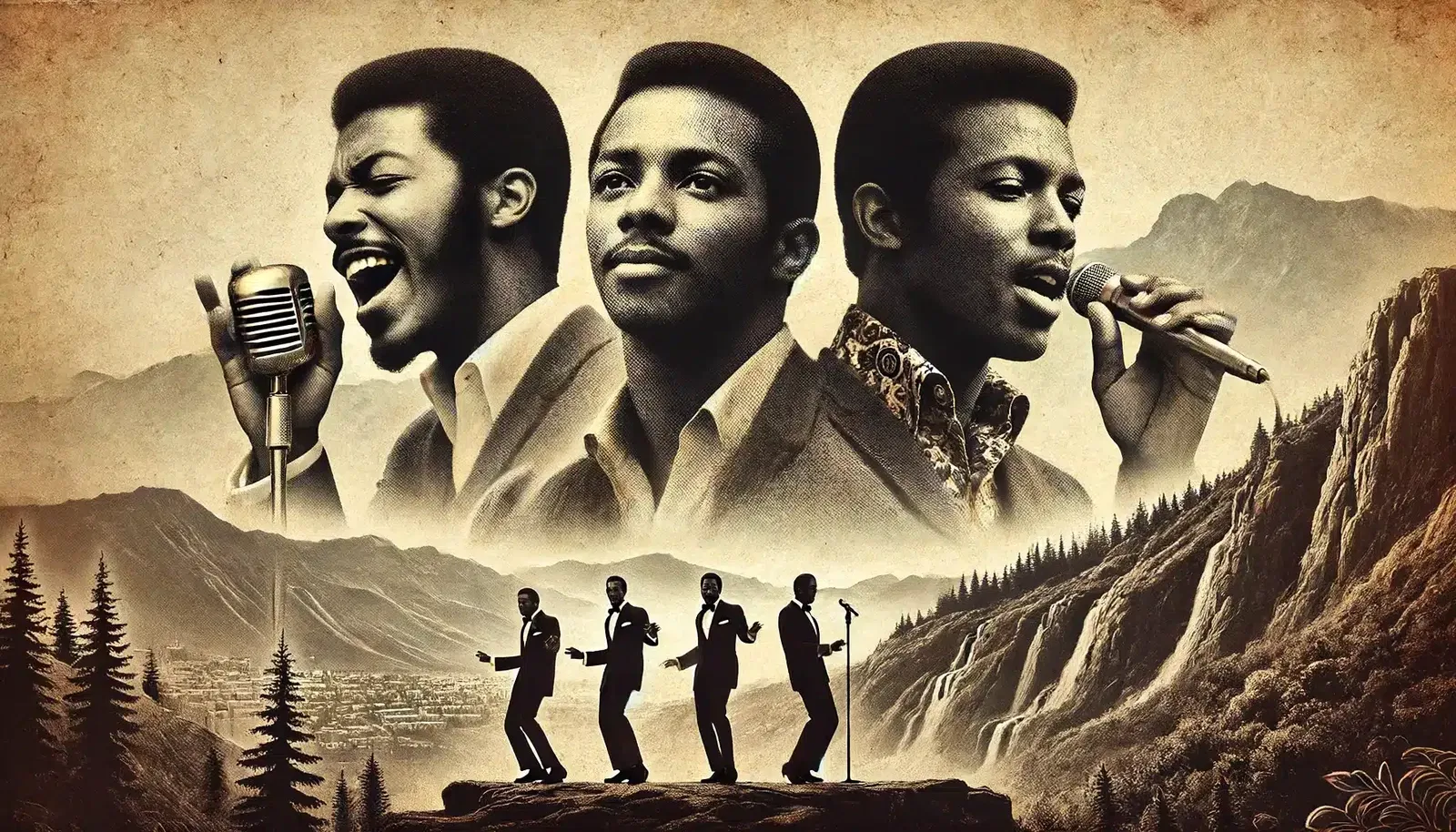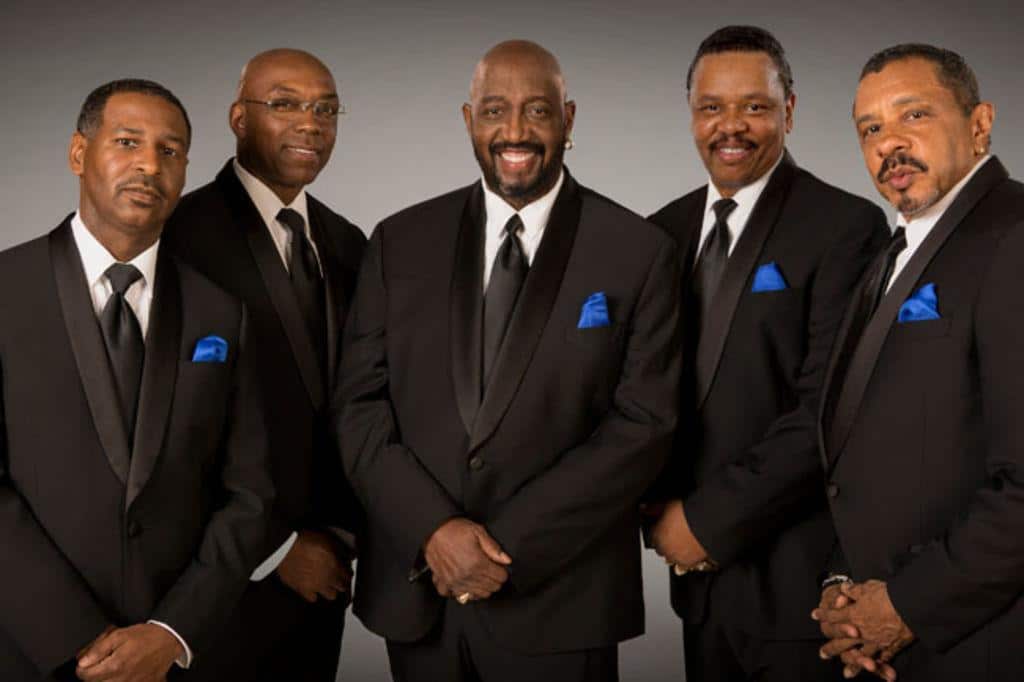Have you ever wondered about the incredible talent behind the soulful harmonies and smooth choreography of the iconic Motown group, The Temptations?
The Temptations’ members have left a lasting impact on the music industry from their early days in Detroit to their rise to international stardom.
Each member brought unique skills and personality to the group, contributing to its distinctive sound and style, which charmed audiences worldwide.
In this article, we’ll examine the lives and contributions of the remarkable individuals who made up this legendary band, exploring their journeys and impact on the music world.
Join us as we celebrate the legacy of the members of The Temptations and discover the stories behind their timeless music.
Formation and Early Years

Origins
The Temptations, one of music’s most successful and influential groups, was formed in Detroit, Michigan, in the early 1960s.
The original lineup consisted of five talented young men: Otis Williams, Melvin Franklin, Eddie Kendricks, Paul Williams, and Elbridge “Al” Bryant.
Each member brought a distinct vocal style and personality to the group, laying the foundation for the Temptations’ signature sound.
The only surviving original member, Otis Williams, was instrumental in bringing the group together.
With his vision and leadership, he guided the Temptations through their early years and beyond.
Melvin Franklin’s deep, rich bass voice provided a solid foundation for the group’s harmonies. In contrast, Eddie Kendricks’ smooth, high-pitched voice added a touch of elegance and sophistication to their sound.
With his warm and soulful vocals, Paul Williams often took the lead on many of the group’s early hits.
Elbridge “Al” Bryant, the fifth original member, contributed to the group’s early success with his strong vocal presence and stage charisma.
Early Struggles
Like many aspiring artists, the Temptations faced challenges and setbacks in their early years.
The group experienced several lineup changes before settling on the classic five-member configuration that would eventually rise to stardom.
Despite their immense talent, the Temptations had to work hard to stand out in the highly competitive Detroit music scene.
They honed their craft by performing at local clubs and venues, often sharing the stage with other up-and-coming acts.
As the group struggled to find their big break, they remained dedicated to their craft, constantly refining their vocal harmonies and stage presence.
Their perseverance and commitment to excellence eventually pay off, setting the stage for their meteoric rise to fame in the coming years.
The Temptations’ Notable Lead Singers
The Temptations’ success can be attributed, in large part, to the incredible talents of their lead singers, each of whom brought a unique style and personality to the group.
David Ruffin’s Impact

David Ruffin, one of the most iconic members of The Temptations, left an indelible mark on the group’s sound during his tenure from 1964 to 1968.
His gritty, passionate vocals brought a raw intensity to the group’s performances, captivating audiences with his impassioned delivery.
Ruffin’s contributions to The Temptations’ discography include timeless classics like “My Girl” and “Ain’t Too Proud to Beg.”
His lead vocals on these tracks showcased his incredible range and ability to convey deep emotion, solidifying his status as a vital group member.
Ruffin’s unique vocal style, characterized by its rough-edged soulfulness, added a new dimension to The Temptations’ sound.
His voice perfectly complemented the group’s smooth harmonies, creating a dynamic and unforgettable listening experience.
Eddie Kendricks’ Influence

As an original member of The Temptations, Eddie Kendricks played a crucial role in shaping the group’s early sound.
His distinctive falsetto voice became a hallmark of the group’s music, adding a touch of elegance and sophistication to their performances.
Kendricks’ lead vocals on songs like “The Way You Do the Things You Do” and “Get Ready” showcased his incredible range and vocal agility.
His smooth, soaring voice perfectly captured these tracks’ romantic and upbeat nature, helping to establish The Temptations as a force to be reckoned with in the world of R&B and soul music.
Throughout his time with the group, Kendricks’ influence remained strong, as his unique vocal style continued to be a defining element of The Temptations’ sound.
Dennis Edwards’ Contributions

When Dennis Edwards joined The Temptations in the late 1960s, he brought a new level of power and soulfulness to the group’s sound.
His dynamic vocals helped usher in a new era for the group as they began incorporating funk and psychedelic elements into their music.
Edwards’ contributions to the group’s discography include the Grammy-winning hit “Papa Was a Rollin’ Stone” and the chart-topping “Cloud Nine.”
His powerful, expressive voice perfectly captured these tracks’ socially conscious and politically charged nature, reflecting the changing times and the group’s evolving artistic vision.
With his commanding stage presence and absolute vocal talent, Edwards helped to keep The Temptations relevant and popular throughout the 1970s and beyond, cementing his status as one of the group’s most vital members.
Signature Vocal Styles
One of the defining characteristics of The Temptations’ sound was the diverse range of vocal styles their lead singers used, creating a rich collage of musical expression.
Overview
One key factor that set The Temptations apart from other vocal groups was the distinctive vocal styles of their lead singers.
Each member brought a unique sound and personality to the group, allowing them to tackle a wide range of musical styles and emotions.
The combination of these varied vocal approaches contributed to the group’s ability to evolve their sound over time, keeping their music fresh and relevant across different eras.
From the smooth, romantic ballads of the early years to the socially conscious funk of the 1970s, The Temptations’ lead singers played a crucial role in shaping the group’s musical identity.
Examples
David Ruffin’s raw, passionate vocals were perfectly suited for the group’s more intense and sincere songs.
His gritty, soulful delivery could convey a sense of urgency and desperation, as heard in tracks like “Ain’t Too Proud to Beg” and “I Wish It Would Rain.”
Ruffin’s vocals added a layer of depth and authenticity to the group’s performances, helping to establish them as one of the most compelling acts of their era.
In contrast, Eddie Kendricks’ smooth, soaring falsetto brought a touch of elegance and romance to The Temptations’ sound.
His lead vocals on songs like “The Way You Do the Things You Do” and “Just My Imagination” showcased his incredible range and vocal control, effortlessly gliding through the melodies and harmonies.
Kendricks’ falsetto became a signature element of the group’s early hits, setting them apart from their contemporaries.
As the group’s sound evolved in the late 1960s and early 1970s, Dennis Edwards’ powerful, soulful vocals helped to usher in a new era for The Temptations.
His commanding delivery perfectly suited the group’s more socially conscious and politically charged material, such as “Cloud Nine” and “Papa Was a Rollin’ Stone.”
Edwards’ vocals brought a sense of urgency and intensity to these tracks, reflecting the turbulent times and the group’s growing artistic ambitions.
The unique combination of these three distinct vocal styles and other members’ contributions helped to create the rich tapestry of sound that defined The Temptations’ music.
Their signature vocal blend, with each lead singer bringing their strengths to the table, remains one of the most iconic and influential in the history of popular music.
Eras of The Temptations
Throughout their career, The Temptations have gone through several distinct eras, each marked by the contributions of different lead singers and the evolution of their musical style.

The David Ruffin Era
The David Ruffin era lasted from 1964 to 1968 and was marked by some of The Temptations’ most memorable hits and electrifying performances.
Ruffin’s charismatic stage presence and soulful, gritty vocals helped propel the group to new heights of success.
During this period, The Temptations released a string of chart-topping singles, including “My Girl,” “Ain’t Too Proud to Beg,” and “I Wish It Would Rain.”
These songs, featuring Ruffin’s powerful lead vocals, became instant classics and solidified the group’s status as one of the most important acts of the 1960s.
However, this era also faced challenges, particularly with Ruffin’s struggles and growing ego.
His behavior eventually led to his departure from the group in 1968, marking the end of a groundbreaking chapter in The Temptations’ history.
The Eddie Kendricks Era
The Eddie Kendrick era surrounding the group’s early years was crucial in establishing The Temptations’ signature sound.
Kendricks’ smooth falsetto and romantic lead vocals drove many of the group’s early hits, such as “The Way You Do the Things You Do” and “Get Ready.”
During this era, The Temptations’ popularity soared, and they became one of the most successful acts on the Motown label.
Kendricks’ contributions to the group’s sound and image were instrumental in their rise to fame.
Despite the success, this era also faced its share of challenges.
As the group evolved and other members began to take on more prominent roles, Kendricks ultimately decided to embark on a solo career, leading to his departure.
The Dennis Edwards Era
The Dennis Edwards era, which began in the late 1960s, signaled a shift in The Temptations’ sound towards a funkier, more contemporary style.
Edwards’ powerful, soulful vocals perfectly matched the group’s new musical direction, as evidenced by hits like “Cloud Nine” and “Papa Was a Rollin’ Stone.”
This era saw The Temptations embracing socially conscious themes and experimenting with psychedelic soul, reflecting the changing times and the group’s artistic growth.
Edwards’ contributions helped to keep the group relevant and popular throughout the 1970s.
However, this era also presented challenges, as the music industry underwent significant changes, and the group had to navigate the shifting landscape.
Despite these obstacles, The Temptations continued to evolve and adapt, with Edwards’ vocals remaining a key element of their sound.
Evolution of The Temptations Music
The Temptations’ music has transformed remarkably, reflecting the changing times and the group’s willingness to experiment with new sounds and styles.
Musical Diversity
The Temptations’ music has evolved remarkably throughout their career, showcasing their versatility and willingness to experiment with different genres.
In the early years, the group’s sound was rooted in doo-wop and R&B, focusing on tight harmonies and romantic ballads.
As the 1960s progressed, The Temptations began to incorporate more elements of soul music into their repertoire.
Songs like “My Girl” and “Ain’t Too Proud to Beg” exemplified this shift, featuring more dynamic vocal performances and a greater emphasis on rhythm and groove.
The group expanded their musical palette in the late 1960s and early 1970s, delving into funk and psychedelic soul.
Tracks like “Cloud Nine” and “Papa Was a Rollin’ Stone” showcased this new direction with hard-hitting beats, socially conscious lyrics, and a more experimental approach to production and arrangement.
Adaptation
One key factor behind The Temptations’ enduring success has been their ability to adapt to changing musical trends and social climates.
The group stayed relevant and influential across multiple decades by continuously evolving their sound and tackling new music themes.
The Temptations’ willingness to take risks and push the boundaries of their music allowed them to connect with new generations of listeners, even as popular tastes shifted over time.
Their flexibility and openness to change ensured they remained at the forefront of the R&B and soul music scenes, setting trends and inspiring countless other artists.
Moreover, the group’s ability to adapt extended beyond their music as they navigated changes in the music industry and society.
From the civil rights movement of the 1960s to the disco era of the 1970s and beyond, The Temptations always seemed to have their finger on the pulse of the times, reflecting their audience’s hopes, dreams and struggles through their art.
Influence on Motown and Soul Music
As one of the most successful and influential acts on the Motown label, The Temptations played a crucial role in shaping the sound and direction of soul music.

Motown’s Growth
The Temptations played a vital role in Motown Records’ growth and success, helping to establish the label as a dominant force in the music industry.
As one of the most popular and influential acts on the Motown roster, The Temptations’ success directly contributed to the label’s prosperity and reputation.
The group’s string of hit records, including “My Girl,” “Ain’t Too Proud to Beg,” and “Just My Imagination,” not only topped the charts but also helped to define the sound of Motown and soul music as a whole.
Their distinctive vocal harmonies and the label’s signature “Motown Sound” created a musical style synonymous with the era.
Moreover, The Temptations’ success opened doors for other Motown artists, paving the way for a new generation of R&B and soul performers.
The group’s popularity and influence helped create a platform for other acts on the label, fostering a creative environment that produced countless classic records and enduring talents.
Legacy
The Temptations’ influence extends far beyond their time at Motown.
Their music and style have continued to inspire and shape popular music for decades.
The group’s innovative approach to vocal harmonies, choreography, and stage presence set a new standard for R&B and soul performers, and their impact can still be felt in the work of contemporary artists.
Many successful musicians across various genres have cited The Temptations as a major influence on their artistic development.
The group’s legacy has transcended generations and musical boundaries, from R&B and soul singers to hip-hop and pop performers.
The Temptations’ socially conscious lyrics and experimental sound in the late 1960s and early 1970s also significantly influenced the evolution of soul music, pushing the genre in new and exciting directions.
Their willingness to address important social and political issues in their music helped to establish the soul as a powerful medium for cultural commentary and change.
Furthermore, the group’s longevity and ability to remain relevant across multiple decades have inspired countless artists, demonstrating the power of adaptability and innovation in the face of an ever-changing musical landscape.
Essentially, The Temptations’ influence on Motown and soul music cannot be overstated.
Their contributions have not only helped to shape the course of popular music but have also left an indelible mark on the cultural fabric of the 20th and 21st centuries.
The Temptations’ Enduring Legacy
More than half a century after their formation, The Temptations’ impact on popular music and culture remains as powerful and relevant as ever.

The Temptations’ Continued Influence
The Temptations’ music and style resonate with artists and audiences decades after success.
Their timeless songs, innovative vocal arrangements, and iconic performances have become a fundamental part of the American musical canon, influencing generations of performers across multiple genres.
Contemporary R&B, soul, and hip-hop artists often pay homage to The Temptations by sampling their music, covering their songs, or drawing inspiration from their vocal stylings and stage presence.
The group’s influence can be heard in the work of countless modern acts, from neo-soul singers to rap and hip-hop performers, who recognize the enduring power and relevance of The Temptations’ music.
Moreover, the group’s legacy extends beyond music, as their fashion, choreography, and overall visual style continue to inspire artists and fans alike.
With their sharply tailored suits and synchronized dance moves, the Temptations’ signature look has become an iconic representation of the Motown era.
It remains a touchstone for style and sophistication in popular culture.
Recognition
Throughout their career and in the years since, The Temptations have received numerous accolades and honors, cementing their status as one of the most important and influential groups in music history.
The group has been inducted into multiple halls of fame, including the Rock and Roll Hall of Fame, the Vocal Group Hall of Fame, and the Grammy Hall of Fame.
The Temptations have also been recognized with several Grammy Awards, including Best R&B Performance by a Duo or Group and the Grammy Lifetime Achievement Award, which celebrates their enduring contributions to the music industry.
In addition to these formal honors, The Temptations’ music and legacy have remained a constant presence in popular culture.
Their songs have been featured in countless films, television shows, and commercials, introducing new generations of listeners to their timeless sound and style.
The group’s story has also been celebrated in various media, including books, documentaries, and even a Broadway musical, “Ain’t Too Proud: The Life and Times of The Temptations,” which showcases their incredible journey and the enduring power of their music.
The Temptations’ lasting impact on popular culture, combined with the continuous recognition and celebration of their contributions, is a testament to their remarkable influence and the timeless nature of their art.
The Temptations’ legacy will endure as long as music lovers and performers value the power of soul, harmony, and showmanship.
Conclusion
The story of The Temptations is one of resilience, innovation, and enduring influence.
From their early days in Detroit to their rise as international superstars, the members of The Temptations have left an unforgettable mark on the landscape of popular music.
Through their exceptional vocal harmonies, electrifying stage presence, and socially conscious lyrics, they have shaped the course of R&B, soul, and beyond.
The legacy of David Ruffin, Eddie Kendricks, Paul Williams, Melvin Franklin, and Otis Williams continues to inspire generations of artists and music lovers alike.
As we celebrate their incredible journey and timeless music, let us remember the profound impact that the members of The Temptations have had on our cultural heritage.
Let their enduring spirit guide us as we move forward into the future.





















